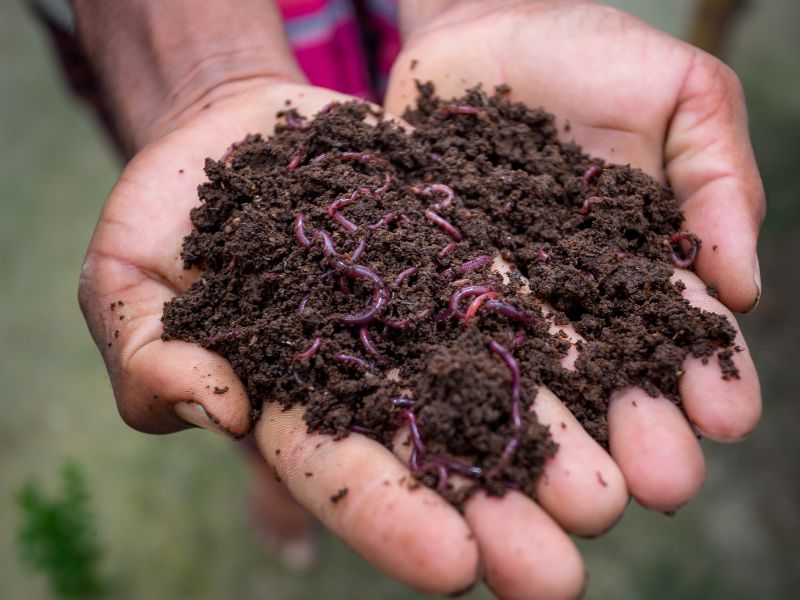Composting with Worms: Wiggling through Winter

Temperature is incredibly important to the productivity and livelihood of worms. Just like us, worms are happiest in moderate temperatures, so they may also need some help to thrive during the cooler months. Fortunately, most of San Diego County rarely experiences freezing temperatures, which can be deadly to worms. After all, they’re mostly water! Nonetheless, the following tips will keep your worms wiggling throughout the winter:
- Limit feeding during cool periods and do not feed the same spot if the food left there last has not decomposed. Colder temperatures slow the rate of chemical reactions, including digestive processes. During the winter, you’ll likely notice that your worms eat slowly and even move slower. Excess food scraps can be stockpiled in the freezer for later — this also makes it easier for worms to digest after thawing! Limited on freezer space? Try preserving your food waste with bokashi! The preserved scraps can be fed to your worms in small amounts later on.
- Monitor the temperature in your bin with a worm bin thermometer (shorter than a compost thermometer), focusing on the center of the bin. If the temperature drops below 55° F, your worms could use some heat. Move your bin to a sunny spot and crack the lid, but plan to check on it within a couple of hours — especially since worm bins are black plastic, they’ll absorb a lot of heat quickly! Your thermometer will come in handy here, too. Move your worms back to the shade if the inner temperature gets above 85° F.
- Keep your worms cozy with a worm blanket. We’ve used the Tumbleweed Worm Blanket with great results. Or, for an upcycling idea, find a friend who uses a meal kit delivery service like Hello Fresh– the insulation they use can also be made into a great worm blanket! Worm blankets will insulate your wigglers and help maintain moisture.
- Move your worm bin inside during nighttime or for the duration of cold weather, if possible. Remember, a well-maintained bin won’t stink or attract flies! Thoroughly bury your food waste to avoid these issues.
- If you live inland where temperatures fluctuate more, consider getting or making an in-ground worm bin. Not only will soil insulate the bin, but worms can also move outside the bucket if temperatures get too low. You can purchase an in-ground bin here at Solana Center; or, if you plan to attend one of our events, let us know ahead of time and we’ll bring one for you!
- Keep your bin filled with bedding to minimize temperature swings.
We hope these tips will keep your worms wiggling through wintry weather. If you have more questions about maintaining your worm bins, call us on the “Rotline” at (760)436-7986 x700 or email compost@solanacenter.org.
